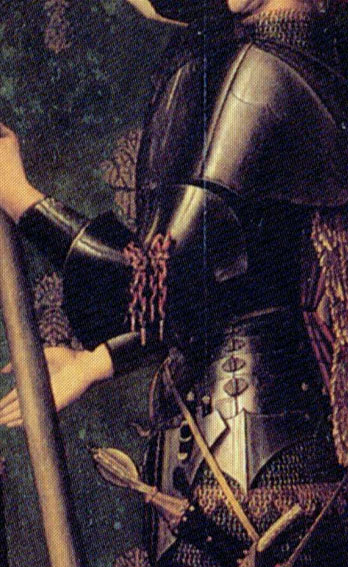I haven't exactly been exposed to a lot of people using seriously high quality armour (Having just moved to the vicinity, I managed to be out of town for the jousing at Harcourt Park this year, darn it!) so everyone I've seen (including people wearing seriously high quality reproduction 15th century civilian dress) was using modern machine-produced cord as far as I could see.
How a man shall be armed says:
| Quote: |
| ... the armynge poyntis muste be made of fyne twyne suche as men make stryngis for crossbowes and they muste be trussid small and poyntid as poyntis. Also they muste be wexid with cordeweneris coode. |
Does anyone know exactly what fibre period crossbow strings were made from? I think linen is a likely candidate because it's strong and has a very long staple so based on that passage, I am assuming some kind of linen cord well waxed with code and having 'points' or chapes/aglets on the ends.
"Cordwainers coode" is a substance for which no period recipies exist, but which we can extrapolate based on it's unbroken use in shoemaking up to the present day, as a mixture of pine pitch or rosin and , optionally some kind of oil depending on the climate you're in. Cold climates need oil or it ends up too hard.
The function of cordwainers code is to lock stitches together inside the channel the awl has made, and it has exactly the same effect on knots, locking them extremely securely.
I happen to have a fair amount of code floating around right now for shoemaking and having gotten several thousand metres of 8/1 linen I just made up a length of 5 loop fingerloop braid from linen stands individually waxed with code, after which I waxed the braid.
The end result is a phenomenally strong, square, braid which takes knots very securely and which is almost totally impervious to moisture and rot.
I suck at fingerloop braiding, and the chapes I've made are a bit rough to say the least, but I'm intending to make a stack of these over the next week and use them on my armour to see how they go.
